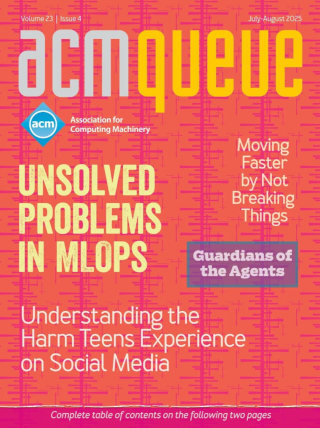
FHIR: Reducing Friction in the Exchange of Healthcare Data:
A discussion with James Agnew, Pat Helland, and Adam Cole
With the full clout of the Centers for Medicare and Medicaid Services currently being brought to bear on healthcare providers to meet high standards for patient data interoperability and accessibility, it would be easy to assume the only reason this goal wasn't accomplished long ago is simply a lack of will. Interoperable data? How hard can that be? Much harder than you think, it turns out. To dig into why this is the case, we asked Pat Helland, a principal architect at Salesforce, to speak with James Agnew (CTO) and Adam Cole (senior solutions architect) of Smile CDR, a Toronto, Ontario-based provider of a leading platform used by healthcare organizations to achieve FHIR (Fast Healthcare Interoperability Resources) compliance. They discuss the efforts and misadventures witnessed along the way to a time where it no longer seems inconceivable for healthcare providers to exchange patient records.
Persistent Memory Allocation:
Leverage to move a world of software
A lever multiplies the force of a light touch, and the right software interfaces provide formidable leverage in multiple layers of code: A familiar interface enables a new persistent memory allocator to breathe new life into an enormous installed base of software and hardware. Compatibility allows a persistent heap to slide easily beneath a widely used scripting-language interpreter, thereby endowing all scripts with effortless on-demand persistence.
When Should a Black Box Be Transparent?:
When is a replacement not a replacement?
The right answer in these cases is to ask the vendor for as much information as possible to reduce the risk in accepting this so-called replacement. First, ask for the test plans and test output so you can understand whether they tested the component in a way that relates to your use case. Just because they tested the thing doesn't mean they tested all the parts your product cares about. In fact, it's unlikely they did. They may have tested just the parts that connect back to the API, rather than the edge cases that would come up when a component is changed in your system.
Linear Address Spaces:
Unsafe at any speed
The linear address space as a concept is unsafe at any speed, and it badly needs mandatory CHERI seat belts. But even better would be to get rid of linear address spaces entirely and go back to the future, as successfully implemented in the Rational R1000 computer 30-plus years ago.
Long Live Software Easter Eggs!
It's a period of unrest. Rebel developers, striking from continuous deployment servers, have won their first victory. During the battle, rebel spies managed to push an epic commit in the HTML code of https://pro.sony. Pursued by sinister agents, the rebels are hiding in commits, buttons, tooltips, API, HTTP headers, and configuration screens.
Walk a Mile in Their Shoes:
The Covid pandemic through the lens of four tech workers
Covid has changed how people work in many ways, but many of the outcomes have been paradoxical in nature. What works for one person may not work for the next (or even the same person the next day), and we have yet to figure out how to predict exactly what will work for everyone. As you saw in the composite personas described here, some people struggle with isolation and loneliness, have a hard time connecting socially with their teams, or find the time pressures of hybrid work with remote teams to be overwhelming. Others relish this newfound way of working, enjoying more time with family, greater flexibility to exercise during the day, a better work/life balance, and a stronger desire to contribute to the world. How can we build work environments, tools, and processes to support the full range of experiences people are going through?



